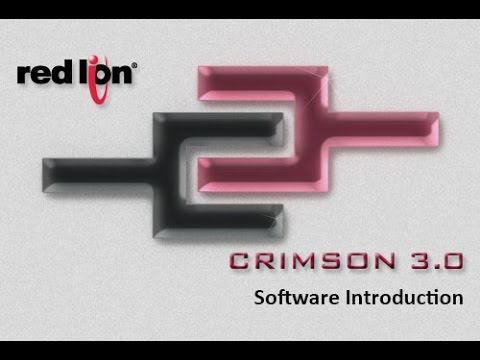1. EXECUTIVE SUMMARY
- CVSS v3 7.8
- ATTENTION: Exploitable remotely/low skill level to exploit
- Vendor: Red Lion Controls
- Equipment: Crimson (Windows configuration software)
- Vulnerabilities: Use After Free, Improper Restriction of Operations within the Bounds of a Memory Buffer, Pointer Issues, Use of Hard-coded Cryptographic Key
2. RISK EVALUATION
Successful exploitation of these vulnerabilities could allow an attacker to execute code, crash the device, or view protected data.
3. TECHNICAL DETAILS
3.1 AFFECTED PRODUCTS
The following versions of Crimson, windows configuration software, are affected:
- Crimson Versions 3.0 and prior
- Crimson Versions 3.1 and prior, to release 3112.00
3.2 VULNERABILITY OVERVIEW
3.2.1 USE AFTER FREE CWE-416
Multiple vulnerabilities can be exploited when a valid user opens a specially crafted, malicious input file that can reference memory after it has been freed.
CVE-2019-10996 has been assigned to this vulnerability. A CVSS v3 base score of 7.8 has been calculated; the CVSS vector string is (AV:L/AC:L/PR:N/UI:R/S:U/C:H/I:H/A:H).
3.2.2 IMPROPER RESTRICTION OF OPERATIONS WITHIN THE BOUNDS OF A MEMORY BUFFER CWE-119
Multiple vulnerabilities can be exploited when a valid user opens a specially crafted, malicious input file that operates outside of the designated memory area.
CVE-2019-10978 has been assigned to this vulnerability. A CVSS v3 base score of 3.3 has been calculated; the CVSS vector string is (AV:L/AC:L/PR:N/UI:R/S:U/C:L/I:N/A:N).
3.2.3 POINTER ISSUES CWE-465
Multiple vulnerabilities can be exploited when a valid user opens a specially crafted, malicious input file that causes the program to mishandle pointers.
CVE-2019-10984 has been assigned to this vulnerability. A CVSS v3 base score of 7.8 has been calculated; the CVSS vector string is (AV:L/AC:L/PR:N/UI:R/S:U/C:H/I:H/A:H).
3.2.4 USE OF HARD-CODED CRYPTOGRAPHIC KEY CWE-321
Crimson uses a hard-coded password to encrypt protected files in transit and at rest, which may allow an attacker to access configuration files.
CVE-2019-10990 has been assigned to this vulnerability. A CVSS v3 base score of 6.5 has been calculated; the CVSS vector string is (AV:N/AC:L/PR:N/UI:R/S:U/C:H/I:N/A:N).
3.3 BACKGROUND
- CRITICAL INFRASTRUCTURE SECTORS: Critical Manufacturing
- COUNTRIES/AREAS DEPLOYED: Worldwide
- COMPANY HEADQUARTERS LOCATION: United States
3.4 RESEARCHER
Michael DePlante, Anthony Fuller, and Todd Manning of Trend Micro’s Zero Day Initiative reported these vulnerabilities to CISA.
4. MITIGATIONS
Red Lion Controls recommends users migrate to Crimson 3.1 release 3112.00 or later where the model choice allows. Updated software can be found at the following link:
https://www.redlion.net/red-lion-software/crimson
The use of a hardcoded key vulnerability (CVE-2019-10990) can be mitigated in two ways:
- The user manual for Crimson 3.1 release 3112.00 now includes a paragraph describing the intended use of the database protection mechanism, noting the software is not designed to provide a cryptographically secure method of database protection.
- In a later release, targeted for September 2019, Red Lion Controls will modify the existing database protection scheme to include an option for a second file access password designed to encrypt the file.
For more information, Red Lion Controls has released a security bulletin that can be found at the following link:
https://support.redlion.net/hc/en-us/articles/360033077531
CISA recommends users take the following measures to protect themselves from social engineering attacks:
- Restrict system access to authorized personnel only and follow a least privilege approach.
- Do not click web links or open unsolicited attachments in email messages.
- Refer to Recognizing and Avoiding Email Scams for more information on avoiding email scams.
- Refer to Avoiding Social Engineering and Phishing Attacks for more information on social engineering attacks.
CISA reminds organizations to perform proper impact analysis and risk assessment prior to deploying defensive measures.
CISA also provides a section for control systems security recommended practices on the ICS webpage on us-cert.gov. Several recommended practices are available for reading and download, including Improving Industrial Control Systems Cybersecurity with Defense-in-Depth Strategies.
Additional mitigation guidance and recommended practices are publicly available on the ICS webpage on us-cert.gov in the Technical Information Paper, ICS-TIP-12-146-01B–Targeted Cyber Intrusion Detection and Mitigation Strategies.
Organizations observing any suspected malicious activity should follow their established internal procedures and report their findings to CISA for tracking and correlation against other incidents.
No known public exploits specifically target these vulnerabilities.
Source:
https://www.us-cert.gov/ics/advisories/icsa-19-248-01


Stay connected